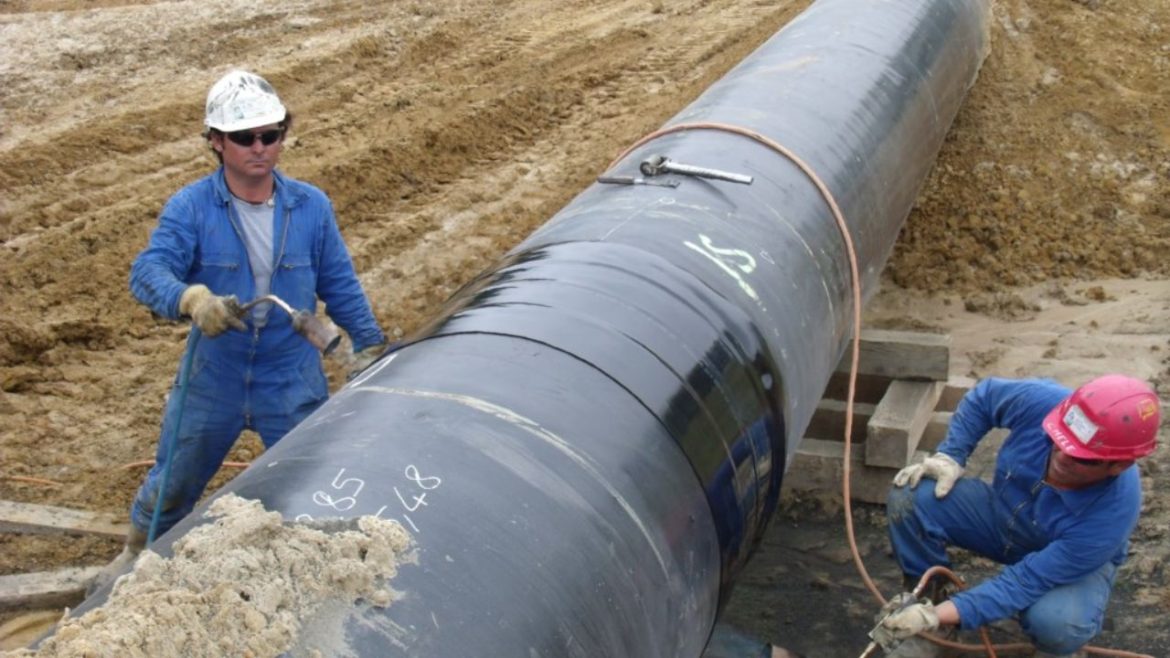The process of pipe coating is a significant process that is being performed by the oil, gas, water, and infrastructure sectors, and its primary purpose is to make the pipeline last longer. The pipelines are at risk of corrosion, abrasion, and attack by chemicals because they can be exposed to quite frequent environmental and operational conditions. Lack of protection against these factors would result in system failures, the cost of maintenance, and even dangerous leakages. The pipe coating acts as a shield guarding against both internal and external factors posing such threats, and maintaining a stable and lasting operation of the pipes as they continue with the main task.
Pipe Coating Propose
The main aim of the pipeline coating is to protect the surface of the pipeline against foreign and domestic attacks. In underground and submerged uses, external coatings protect against environmental influences such as moisture, soil chemistry, and damage inflicted by the mechanical environment. Internal coatings, in their turn, minimize the friction and prevent the effect of corrosion by the substances that are transported inside the pipe, e.g., crude oil, gas, or wastewater. Through a proper kind of coating, manufacturers can greatly improve the strength of pipes, and they may last longer with fewer failures of the pipe.
Increased Mechanical Strength
Besides being resistant to corrosion, the coatings applied on the pipe play a significant role in increasing the mechanical strength of the pipelines. Pipes, which have been coated, are in a better position to resist the physical shock during transportation procedures, handling, and installations. This is an added advantage, especially in high-stress areas, such as oil rigs at sea or a construction site, where they may have to bear loads and possibly scrape. More cost-effective is bituminous coating, which is also highly efficient in preventing physical damage and is widely applied in water and sewage networks.
Flow Efficiency
The other benefit of regular pipeline coating is the improvement of the effective stream. These surface coats in the inner lining of the pipe produce smoother surfaces, thereby lowering the friction experienced during the passage of fluids. This decrease in friction permits more effective transportation of materials and may result in a reduction in the cost of pumping and energy consumption. This efficiency is of utmost concern in ensuring that the pipeline meant to transport viscous fluids or large quantities of either gas or water a long distance continues to be productive in terms of its operation as well as lessening the cost of expenditure.
Maintenance and Operation Cost Savings
Although the initial cost associated with pipe coating may be a great amount, it may pay off with some huge savings in the long run. The rates of failure in coated pipes are lower, inspection requirements for coated pipes are limited, and the maintenance on these pipes is not rigorous. The businesses enjoy less distortion in their functions and reduced expenditure on repairs or substitution. Additionally, the chances of the environment being contaminated by a failure of the pipeline are minimal, and this will assist organizations to save on regulatory fines and imminent damage to their image.
Industry Uses and Applications
Pipe coating is used in various industries, and each industry encounters a different set of problems. In the oil and gas industry, pipes that are coated are used to carry highly corrosive and abrasive materials through wide and mostly extreme conditions. Due to such harsh conditions, additional protection will be needed to make these pipelines functional. Coatings will allow these pipelines to withstand these harsh conditions. The use of coatings in the management of water and wastewater prevents corrosion and contamination, hence maintaining the water quality and water and wastewater infrastructure. In chemical and petrochemical plants, it is essential to have coatings on pipelines to protect against aggressive chemicals and extreme temperatures. In general, construction-coated pipes are selected, also because they are more resistant and do not require maintenance to the same extent.
Conclusion
Pipe coating is a critical aspect that every stakeholder should have an idea about insofar as the design, manufacture, and maintenance of a pipeline are concerned. It is not only a protective layer, but it is a long-term investment in the reliability, safety, and performance of pipelines. Since the pipeline networks will only expand and age, the need for high-quality coatings will only increase. To ensure many years of operation of the pipeline, prevention of different operational risks, and high efficiency and safety levels of their projects, pipeline operators could apply the appropriate coating system.
